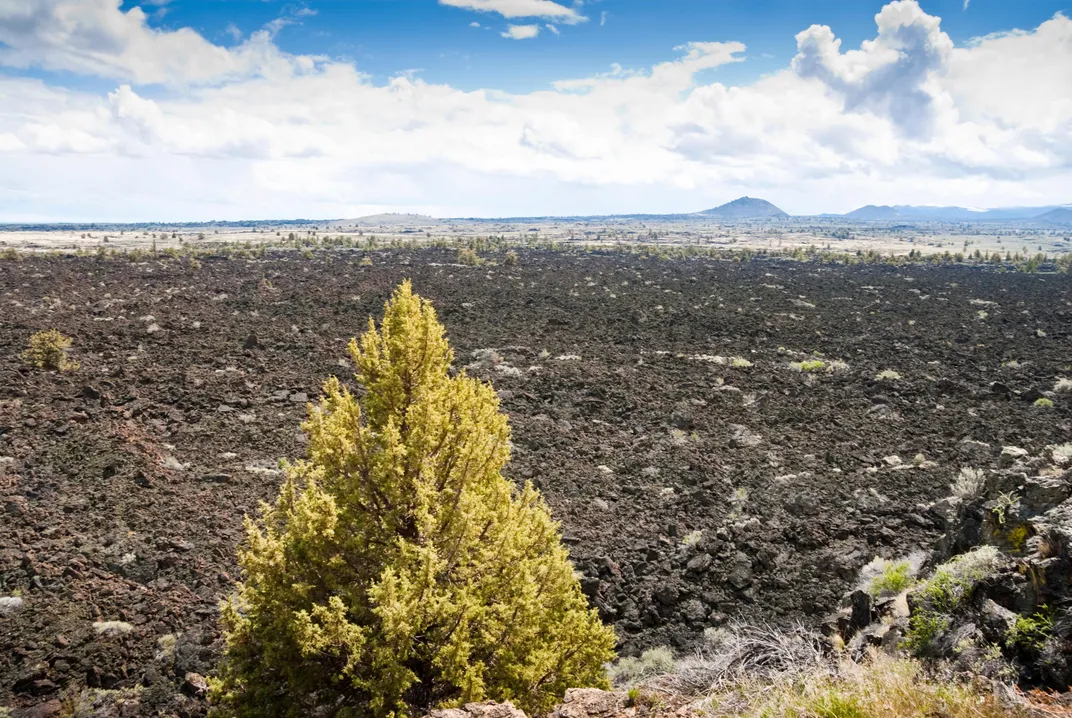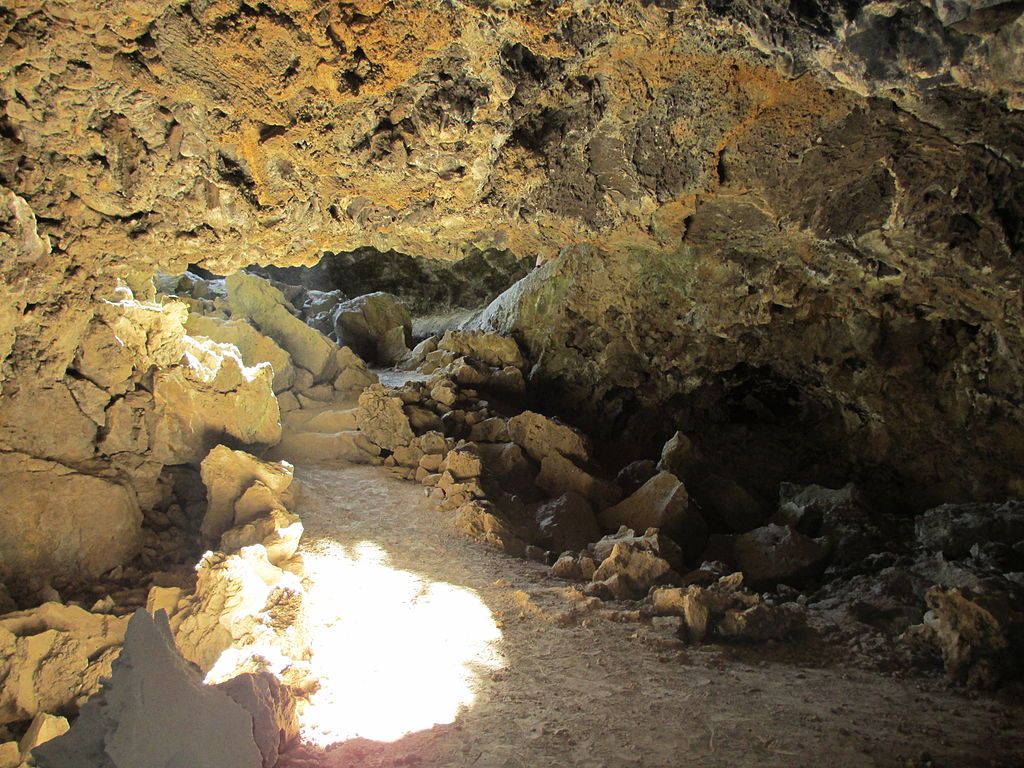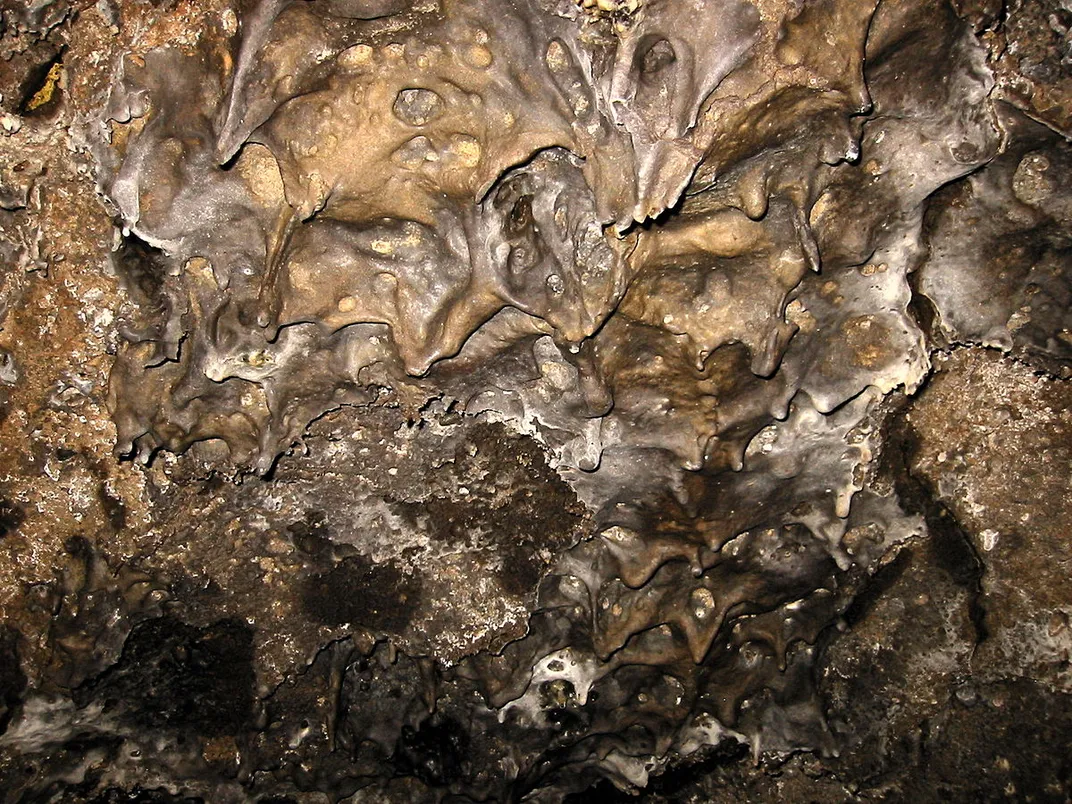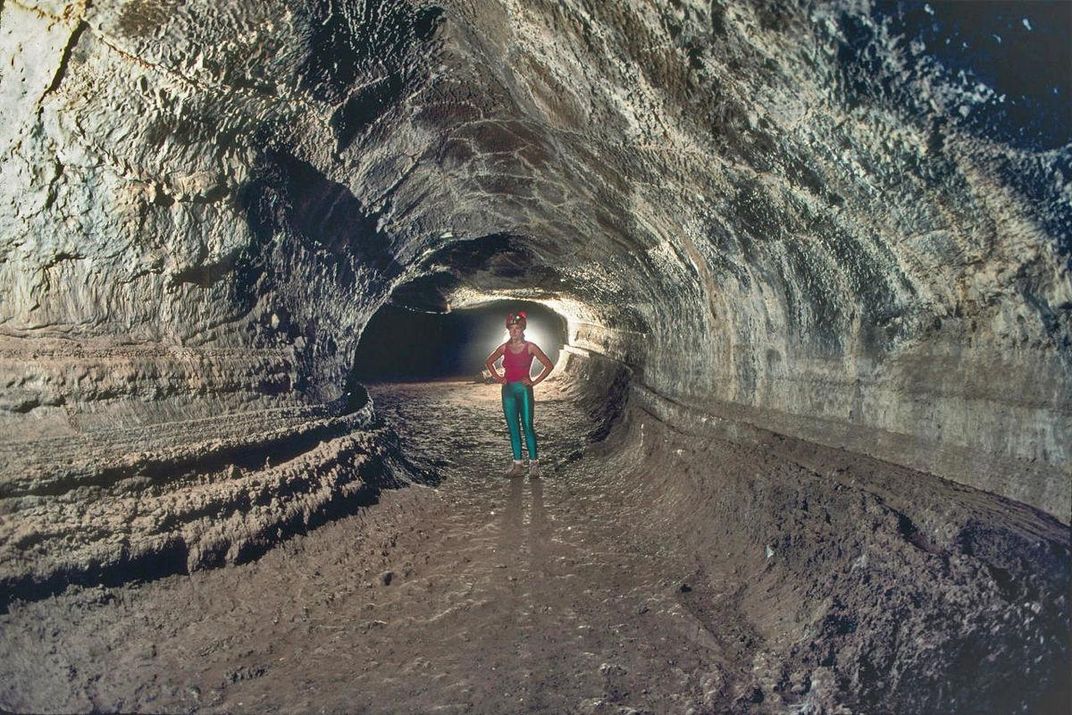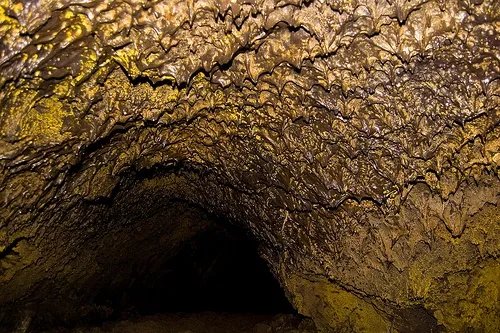It’s necessary to duck to fit under some of the low ceilings at Golden Dome Cave, but the experience is entirely worth it. Walking through the ancient lava rubble, a flashlight in hand, cave-goers wind through a number of passages until they come to the dome itself, painted with gold foil.
At least, that’s how it looks: cathedral-like and opulent. But, as park rangers at the Lava Beds National Monument in Tulelake, California, will explain, nobody has used paint.
What’s really happening is that a colony of bacteria—a type of actinomycete combined with 13 other phyla of bacteria—coats the upper surfaces of the cave. These microorganisms live without ever seeing the sun, are yellowish in color and are hydrophobic, meaning that water beads up on them. The result, for human eyes, is a luminous golden sparkle—a magical-looking combination of bacteria, water and light. And although other caves at Lava Beds National Monument contain that dazzling combo as well, Golden Dome Cave’s unique shape makes the metallic sheen especially stunning.
While visitors rambling through the caves probably notice the arresting color, scientists have noticed something else. One park ranger recently explained on a guided tour that NASA has taken an interest in the cave bacteria because the colony may be similar to microorganisms that could survive on Mars. As a representative from the monument explains, microbes are the oldest form of life on Earth, and studying them could provide information useful to NASA scientists as they search for a planetary analogue to ours.
The NASA research team will use two different methods to study the bacteria: x-ray diffraction to determine mineral composition and DNA analysis to determine bacterial composition. The research requires careful maneuvering, however: The tiny creatures are so delicate that if a cave-goer merely touches a spot on the mat, as the colony is called, it may take those bacteria 40 years to heal.
But Golden Dome is just one of more than 20 caves to explore at Lava Beds National Monument. Each cave is ranked according to difficulty (least-challenging, moderately challenging and most-challenging), based on the smoothness or jaggedness of the rocks, whether or not one has to duck to get through and a few other factors. (Golden Dome is labeled moderately challenging.) Another highlight of the area is Skull Cave, rated one of the easiest to explore. Visitors have much more room here than in some of the other lava caves, and the extremely high ceiling means those walking through can be completely upright. The cave is named for the two human skeletons once discovered inside along with the bones of several animals, including bighorn sheep.
The National Park Service provides free guided tours of the caves, but visitors can go caving on their own—any time they’d like, even in the middle of the night.
Despite the “beds” in their name, the site is actually a collection of tube-like caves formed 10,500 to 65,000 years ago, after a volcano now called Medicine Lake exploded several times. When the molten basaltic lava flowed downhill, it cooled and solidified first on outer surfaces, forming a number of tubes. Once the eruption ceased and the inside of each new tube drained, parts of the tube interiors cracked and collapsed. This created openings to the outside—ones we can still climb through, tens of thousands of years later.
Visitors can also see two types of rock art at Lava Beds: carved petroglyphs and painted pictographs. As the National Park Service explains, these images are all “in the traditional territory of the Modoc people and their ancestors or predators.” (Some Modocs still come to their ancestral land near the caves as part of spiritual practices, since the place remains a sacred landscape for them.)
Some of the pictographs, which are black, white and occasionally red, have faded a bit over time, but to be fair, they are ancient—the ones that scientists have been able to date are as old as 1,500 years. Many of these pictographs appear at cave entrances. The rock carvings, some of which may be as old as 6,000 years, are largely geometric, which is a little unusual compared to rock art in other areas of the West, which more frequently depicts people and animals.
“With over 5,000 individual carvings,” NPS writes, “this site is one of the most extensive representations of American Indian rock art in California—it is possible that dozens or even hundreds of generations of artists paddled out in canoes, sharp sticks or stones in hand, to leave their mark here in the soft volcanic tuff.”
Meanwhile, those wet, golden microbes may teach NASA about our origins—and lead us to planetary discoveries far beyond the ancient caves.
/https://tf-cmsv2-smithsonianmag-media.s3.amazonaws.com/filer/86/0d/860d9f33-d0e5-45fb-9a27-cb92d749cd28/golden_bacteria.jpg)
